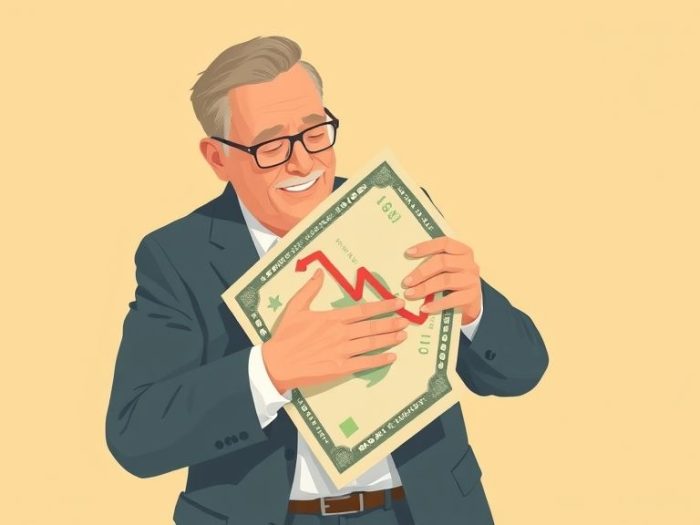The endowment effect is a cognitive bias that significantly influences our financial decisions.
Understanding this bias is crucial for investors seeking to make rational choices and optimize
their portfolios. This article explores the endowment effect and provides strategies to overcome
its negative consequences.
Understanding the Endowment Effect
The endowment effect is the tendency to value an object or asset more once you own it, compared
to how you valued it before you acquired it. This overvaluation occurs simply due to ownership.
Example:
- You might demand a significantly higher price to sell a stock you own than what you’d be willing to pay to buy the same stock.
Why Does the Endowment Effect Exist?
The endowment effect likely arises from several psychological factors:
- Loss Aversion: As discussed before, the pain of losing something feels stronger than the pleasure of gaining something of equal value.
- Ownership Attachment: We develop an emotional connection to things we possess.
- Status Quo Bias: We prefer things to stay the way they are, and selling an asset can disrupt that status quo.
How the Endowment Effect Affects Investors
The endowment effect can lead to several detrimental behaviors:
- Holding Losing Positions Too Long: Investors may hold onto underperforming stocks because they overvalue them, making it hard to sell at a loss.
- Missing Better Opportunities: Overvaluing current holdings can prevent investors from selling and reinvesting in more promising assets.
- Inaction: The endowment effect can lead to inertia, making investors reluctant to change their portfolio even when it’s necessary.
- Suboptimal Trading: Traders may make poor decisions when buying or selling assets, influenced by their perceived ownership value.
Strategies to Overcome the Endowment Effect
1. Adopt an Objective Perspective
Try to view your investments as objectively as possible, as if you didn’t already own them.
- Ask Yourself: “If I didn’t own this, would I buy it at the current price?”
- If the answer is no, it’s a strong indicator to consider selling.
2. Focus on Future Potential
Evaluate investments based on their future potential returns, not on your purchase price or emotional attachment.
3. Use a Decision-Making Framework
Develop a systematic approach to evaluating investments, using predefined criteria.
- Fundamental Analysis: Assess the company’s financial health and future prospects.
- Technical Analysis: Analyze price charts and indicators.
4. Consider Opportunity Cost
Evaluate the potential return you’re missing out on by holding onto an underperforming asset.
- Ask Yourself: “What else could I do with this capital?”
5. Set Clear Exit Rules
Establish predefined exit rules before making an investment.
- Stop-Loss Orders: Automatically sell if the price reaches a predetermined level.
- Profit Targets: Set a target price for selling.
Conclusion
The endowment effect is a common psychological bias that can significantly impact investment
decisions. By understanding its causes and implementing strategies to overcome it, investors can
make more rational choices, improve portfolio performance, and achieve their financial goals more
effectively.
Related Keywords
Endowment effect, behavioral finance, cognitive bias, investment psychology, trading psychology,
investment decisions, financial decision-making, trading mistakes, loss aversion, status quo bias.
Frequently Asked Questions (FAQ)
1. What is the endowment effect?
The endowment effect is the tendency to value an object or asset more once you own it, compared to how you valued it before acquiring it.
2. How does the endowment effect affect investors?
It can lead to holding losing positions too long, missing better opportunities, inaction, and suboptimal trading decisions.
3. What are the psychological causes of the endowment effect?
Likely causes include loss aversion, ownership attachment, and status quo bias.
4. What is loss aversion?
Loss aversion is the tendency to feel the pain of a loss more strongly than the pleasure of an equivalent gain.
5. How does ownership attachment contribute to the endowment effect?
We develop an emotional connection to things we own, making us value them more.
6. What is status quo bias?
Status quo bias is the preference for things to stay the way they are, and selling an asset can disrupt that.
7. What is the most important strategy to overcome the endowment effect?
Adopting an objective perspective and evaluating investments as if you didn’t already own them is key.
8. Why should I focus on future potential?
Investments should be evaluated based on their future potential returns, not on your purchase price.
9. How can a trading plan help?
A predefined trading plan provides objective rules for buying and selling, reducing emotional decision-making.
10. What is the ultimate goal of overcoming the endowment effect?
The goal is to make more rational investment choices, improve portfolio performance, and achieve your financial goals more effectively.



